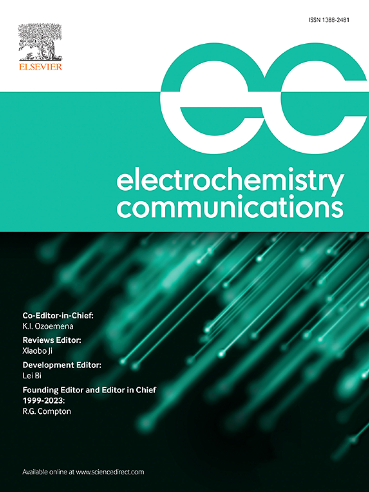A review article on: Voltammetric detection of lead, mercury, chromium, and arsenic metal ions from environmental samples
IF 4.2
3区 工程技术
Q2 ELECTROCHEMISTRY
引用次数: 0
Abstract
Detecting hazardous heavy metals like lead, cadmium, mercury, and arsenic is a significant global issue because of their high toxicity and environmental durability. While traditional laboratory methods provide accurate results, their high cost, complexity, and slow processing times restrict their practicality for widespread, on-site monitoring. In this regard, electrochemical techniques, especially voltammetry, have become a strong alternative, delivering a great mix of high sensitivity, portability, and affordability.
This review highlights recent advancements in innovative electrode materials, such as graphene-modified electrodes and sensors enhanced with metal nanoparticles, along with advanced stripping techniques like anodic stripping voltammetry (ASV) and square wave voltammetry (SWV). Thanks to these advancements, detection limits have improved significantly, often reaching the parts per billion (ppb) range, while the selectivity for specific metal ions has also been enhanced.
Additionally, the review critically examines methods for analyzing water, soil, and sediment samples, showcasing the promising capabilities of nanocomposite materials that greatly increase sensitivity and stability. It also emphasizes the importance of standardized protocols for reliable comparisons and discusses future research directions, including the development of new nanocomposite materials and the integration of these advanced ‘nanosensors’ into portable devices for real-time environmental monitoring.
综述了环境样品中铅、汞、铬和砷金属离子的伏安法检测
检测有害重金属,如铅、镉、汞和砷,是一个重大的全球性问题,因为它们的高毒性和环境持久性。虽然传统的实验室方法提供准确的结果,但其高成本,复杂性和缓慢的处理时间限制了其广泛的现场监测的实用性。在这方面,电化学技术,特别是伏安法,已经成为一个强有力的替代方案,提供了高灵敏度,便携性和可负担性的良好组合。本文重点介绍了创新电极材料的最新进展,如石墨烯修饰电极和金属纳米颗粒增强传感器,以及先进的剥离技术,如阳极剥离伏安法(ASV)和方波伏安法(SWV)。由于这些进步,检测限有了显著提高,通常达到十亿分之一(ppb)的范围,同时对特定金属离子的选择性也得到了增强。此外,本文还对水、土壤和沉积物样品的分析方法进行了批判性的研究,展示了纳米复合材料在极大提高灵敏度和稳定性方面的潜力。它还强调了标准化协议对于可靠比较的重要性,并讨论了未来的研究方向,包括开发新的纳米复合材料和将这些先进的“纳米传感器”集成到用于实时环境监测的便携式设备中。
本文章由计算机程序翻译,如有差异,请以英文原文为准。
求助全文
约1分钟内获得全文
求助全文
来源期刊

Electrochemistry Communications
工程技术-电化学
CiteScore
8.50
自引率
3.70%
发文量
160
审稿时长
1.2 months
期刊介绍:
Electrochemistry Communications is an open access journal providing fast dissemination of short communications, full communications and mini reviews covering the whole field of electrochemistry which merit urgent publication. Short communications are limited to a maximum of 20,000 characters (including spaces) while full communications and mini reviews are limited to 25,000 characters (including spaces). Supplementary information is permitted for full communications and mini reviews but not for short communications. We aim to be the fastest journal in electrochemistry for these types of papers.
 求助内容:
求助内容: 应助结果提醒方式:
应助结果提醒方式:


